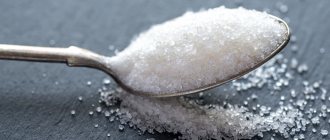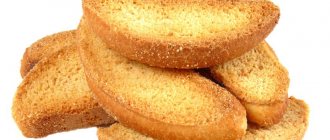Historical background on sugar
Over 150 years, people began to consume sugar ten times more
Let's go back 150 years. At that time, sugar production was very complex, expensive and, on average, a person consumed no more than 2 kg per year. Studies from the beginning of the 21st century showed 35-40 kg of sugar per capita per year. Such rapid growth could not go unpunished. And if 50 years ago animal fats were named the main enemy, then sugar became the culprit.
Many people, especially the weaker sex, believe that they cannot live without sweets. The main argument in favor of this is that nerve cells use exclusively glucose as an energy material. Indeed, our brain cells prefer this monosaccharide. But, the need for it is limited to 50g per day. The remaining tissues are able to use fatty acids and amino acids for their needs. People with a sweet tooth overlook the fact that almost all carbohydrates are broken down quite quickly by enzymes into glucose or fructose (a slightly different, inverted form of glucose). That is, you can “gain” 50g or even more sugar for your beloved brain from a serving of pasta, 2 slices of whole grain bread and a couple of apples. There is no longer room for candy and ice cream.
Among other things, ready-made store-bought sweets will bring you fats (usually margarine), white wheat flour, dyes and preservatives. And if sugar itself, in comparison with fats, does not have the highest calorie content, then in the composition of donuts, cakes, milk chocolate, with which sweet tooths finish any breakfast, lunch and dinner, it adds 300-500 kcal. That's a lot.
Be careful, because often we do not pay attention to excess calories.
Why do we love sweets and why is it dangerous?
Let's look at the reasons for the dangerous love of sweets. Scientists have confirmed some of them.
- Rare and insufficient meals, just hunger. Sweet foods quickly restore blood glucose levels, and the natural desire to eat recedes.
- A deficiency of certain microelements (iron, calcium, magnesium, chromium) can also increase the need for foods containing them, and often these are sweets. Chocolate, ice cream, for example.
- State of stress, lack of serotonin. Sweet foods contribute to the additional release (but not synthesis!) of this hubbub, temporarily helping to fight stress.
- Formation of addiction to sugar. The strength of this addiction is compared to cocaine addiction, so a decisive refusal of sweets is usually accompanied by a syndrome
- Insufficient amount of sleep, late going to bed. Biologically, a person’s clock is configured in such a way that the synthesis of hormones (including those responsible for the feeling of hunger and satiety) is associated with a certain time of day. If you stay up late, you can get under the influence of ghrelin, which will call you to a bowl of candy.
- Genetic predisposition. Quite a lot (more than 50) of gene polymorphisms (point changes in the structure of DNA) responsible for the regulation of appetite, the growth of fat cells, and sensitivity to insulin and glucose have been studied. Research has shown a link between some of them and cravings for sweet tastes.
Let's say you agree that you have a sweet tooth. And even though it is not good for health and beauty. And they have already decided to end it. What can help you with this?
- Understanding that giving up sweets will bring discomfort and inconvenience. We talked about cravings for sweets as a variant of drug addiction. It will not be easy for the body to adapt to more complex ways of producing glucose. Your head may hurt, your mood and sleep may deteriorate. This condition lasts on average 48-72 hours. If you endure them, it will be easier in the future.
- Analyze your usual diet: are there big “holes” in it, long breaks in meals, which are usually filled with sweets? Divide the daily set of foods and dishes into 4-5 meals, so that every 2-3 hours you have something to chew (but not sweets!)
- Include a protein dish at every meal - meat, poultry, cheese or cottage cheese, legumes. They will provide a longer feeling of fullness and reduce the risk of eating candy.
- Don't exclude healthy fats from your diet. Some nuts, avocado, olive oil, eggs or fish along with sufficient calories will add Omega-3,6 fatty acids and compensate for the lack of magnesium, zinc, iron, chromium.
Remember "healthy" fats.
- If you want to eat sweets, drink water or unsweetened tea; sometimes the feeling of thirst is mistaken for a feeling of hunger.
- Another option is to take a break for a short warm-up. You can walk, warm up a little, jump - look, and let go. Muscle work promotes the production of endorphins, which are also released by sugar. That is, in terms of relieving stress and tension, glucose and physical activity have similar mechanisms
- The absence of sweets in the house or workplace is a tough but quite effective approach.
- If there is friendly support and company in the fight against sugar, success is guaranteed. Your best friend and family members simply must become your allies and fans!
- For those who are in no hurry, you can choose the path of gradual weaning. To do this, you need to honestly count the number of desserts per day, reduce them to a minimum, then include them not every day, and finally, no more than 1-2 times a week. Try to ensure that the portion “weighs” no more than 150 kcal. And replace quantity with quality. Replace 100g of Snickers with 10-15g of the best truffle candy
Five best ways to give up sweets
As you know, sugar is called sweet death, and salt is called white. However, if a person still needs salt in small quantities (no more than 6 grams per day), then sugar is not needed at all! All scientists and doctors have long agreed on this opinion. After all, human civilization lived without sugar for hundreds of thousands of years, and our bodies have not yet had time to adapt to the advent of refined sugar. Hence - digestive disorders, skin rashes...
And yet the modern world is not able to give up sweets. And doctors can only recommend at least seriously reducing its amount. For example, according to WHO recommendations, sugar should be consumed in the body in the amount of up to 10% of total calories. An ordinary woman of average height who goes to work by subway, goes shopping a couple of times a week and whose work does not involve physical labor needs 2000 kcal per day. This means that she can eat 200 kcal worth of sugar, that is, 50 grams. This is 10 teaspoons. It would seem that it is not so easy to eat 10 teaspoons of sugar a day. However, the average Muscovite eats 20 spoons per day and has no idea about it. Why? Because besides your sugar bowl, sugar is contained in huge quantities in almost all industrially produced products, from sausage to mustard, not to mention soda. Experts find sugar even where it shouldn’t be there at all - for example, in sour cream or frozen potatoes. Manufacturers add it there to improve the taste of products.
And some products contain so much sugar that you can be horrified. For example, in a half-liter bottle of soda there are 56 grams of it - that is, 11 spoons, which is more than our daily requirement. And if you also eat sweet yogurt (up to 20 grams), drink a cup of coffee in the morning and at lunch with two spoons of sugar (20 grams), eat instant porridge, a piece of ham, sauerkraut salad - you will gain another 50 grams. And that’s not counting cakes, cookies and sweets, which many people love to snack on at work. As a result, the pancreas suffers, the function of which is to secrete insulin; incoming carbohydrates are stored in fat. What can we say about all sorts of little things like caries!
In general, friendship with sugar needs to be, if not stopped, then at least dosed. At least everyone can give up obvious sweets - psychologists have no doubt about this.
Psychologist Anna Perelygina told MK about five proven ways to fight off cravings for sweets: “First, you need to decide why you are drawn to sweets. Many people say that it invigorates and helps recharge their batteries. However, have you noticed that this effect does not last long? After some time, a loss of strength sets in, and the body demands more and more sweets. Young mothers are especially susceptible to this weakness, which is why they begin to gain excess weight after childbirth. In addition, many girls and women experience an emotional craving for sweets: when you don’t feel like doing something, you want to distract yourself from unpleasant thoughts and treat yourself, for example, with a chocolate bar,” says our expert.
So, the first way . Never eat sweets before meals. Remember, our grandmothers taught us not to interrupt our appetite. And they were right! Along with sweets, the body receives empty calories, which make you feel full for a while, but do not provide any benefit to the body. After all, sweets do not contain useful micronutrients that are necessary for any body. As a result, very often even obese people suffer from a deficiency of many essential substances and exhaustion of the body.
Photo: Gennady Cherkasov
Second way. Try to normalize your sleep schedule. It would seem - what is the connection? The most straight line! Only during sleep does the synthesis of hormones necessary for our body occur, including those that regulate appetite and the feeling of satiety. At the same time, hormones are produced at different hours, starting from 10 pm (which is why you need to fall asleep before midnight and get up at 6–7 am). And if a person sleeps little or goes to bed late, the synthesis of hormones is disrupted. As a result, such people constantly want a snack, and often a sweet one - a bun, a pie, a candy, a chocolate bar. People who have good sleep have no time for this nonsense - they eat only what the body really needs.
Third way. For many, it will sound blasphemous, but giving up excessive coffee consumption will help you overcome your cravings for sweets. “Coffee is a deceptive product. On the one hand, it contains a lot of antioxidants, but they bring benefits only if you drink coffee in moderation - no more than one or two cups a day. Those who exceed this norm risk facing unpleasant consequences. Excessive coffee consumption disrupts the functioning of the adrenal glands, as a result, instead of vigor, the body begins to become even more tired. And on an emotional level, she finds solace in sweets,” says Anna Perelygina. And he suggests replacing coffee with green tea or chicory.
Fourth way. Try to add green vegetables and any herbs to any food. They are especially useful as part of a hearty lunch, after which many people want to “varnish” what they have eaten with something sweet. “If you eat a green salad during lunch, the resulting fiber will prevent a sharp surge in blood sugar and prevent you from falling asleep. And at the same time it will reduce your cravings for sweets,” continues Anna Perelygina.
Fifth way. You are unbearably hungry for a cream cake. Eat dried fruits! They are much healthier and will still satisfy your sweet tooth.
WHAT TO REPLACE SUGAR
The best thing is honey. Some people use agave syrup, but nutritionists warn that it has a high glycemic index, meaning it spikes blood sugar levels.
RECIPE FOR A HEALTHY SMOOTHIE THAT CUTS SWEET CRAVINGS
Place one banana, half a sweet pear and a bunch of lettuce leaves or greens without a strong aroma into the blender bowl, so cilantro, arugula or parsley won't work. But cucumbers and celery are good in this smoothie (in this case, add a drop of lemon juice). Add half a glass of water, shake well and pour into glasses. By the way, a smoothie with water, unlike milk, is not only tasty, but also a healthier and low-calorie option. These smoothies are especially good for children, not all of whom like fruits and green salad.
You need to drink the smoothie right away, fresh - you can’t keep it for a long time after preparation, it will become useless. At the same time, smoothies are much healthier than freshly squeezed juices, because they retain pulp - fiber in its pure form, which is simply thrown away when squeezing the juice. Another tip: try to choose fruits with a low glycemic index for smoothies: kiwi, berries.











